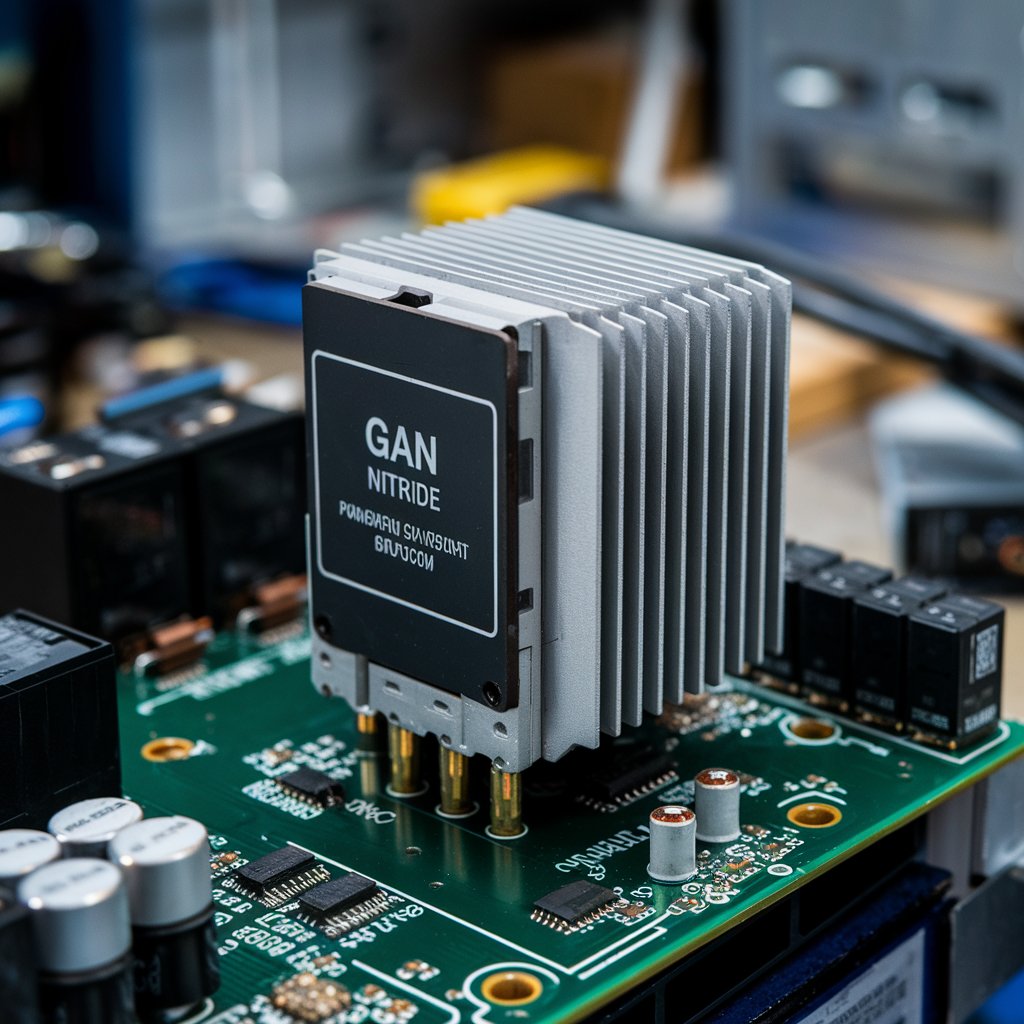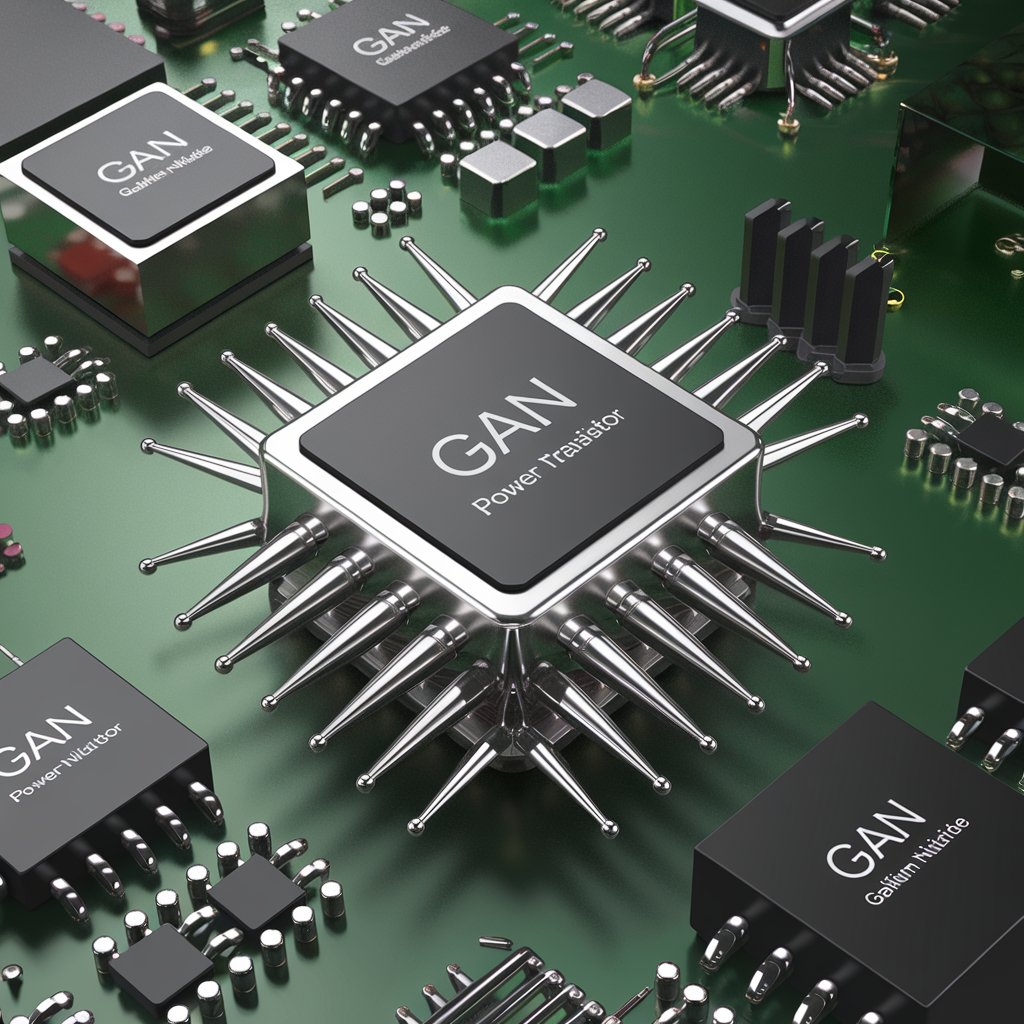The Gallium Nitride (GaN) semiconductor device market in North America is experiencing an unprecedented surge in North America, driven by strategic investments in cutting-edge industries such as 5G telecommunications and electric mobility. As the demand for high-efficiency, high-performance electronic devices grows, GaN technology is emerging as a key enabler of the next generation of power electronics. North America is set to lead the global market, with companies and governments increasingly investing in GaN semiconductor development to capitalize on the massive growth potential in industries like 5G networks, electric vehicles (EVs), renewable energy, and aerospace.

What Makes GaN Semiconductors a Game-Changer?
Gallium Nitride is a wide bandgap semiconductor material that offers significant advantages over traditional silicon-based devices, particularly in power electronics. GaN devices are capable of handling higher voltages, frequencies, and temperatures, which makes them ideal for applications that demand greater efficiency and smaller form factors. These benefits are crucial for sectors such as telecommunications, electric vehicles, and renewable energy, where power efficiency and size constraints are becoming increasingly important.
In addition to their high efficiency, GaN semiconductors enable faster switching speeds, leading to reduced power losses, faster charging times, and enhanced performance in applications ranging from RF amplifiers to power converters. As a result, industries across North America are tapping into GaN’s potential to create next-generation technologies that can meet the growing demand for faster, smarter, and more energy-efficient devices.
The Role of GaN in 5G Infrastructure
One of the most significant drivers behind the surge in GaN adoption in North America is the rollout of 5G networks. The next generation of wireless technology promises to revolutionize industries by providing ultra-fast data speeds, low latency, and greater network capacity. However, achieving these objectives requires substantial upgrades to existing infrastructure—an area where GaN semiconductors are already proving invaluable.
In 5G base stations, GaN power amplifiers are replacing traditional silicon amplifiers to enable higher frequencies, better signal quality, and more efficient power usage. GaN technology offers the capability to handle the high power output needed for 5G infrastructure, ensuring that these networks can efficiently deliver the performance required to support billions of connected devices. GaN’s efficiency also helps reduce the size and cost of 5G base station equipment, accelerating the deployment of 5G networks across North America and beyond.
Leading telecom companies in North America are investing heavily in GaN-based solutions for 5G infrastructure. Firms like Qualcomm, Broadcom, and Analog Devices are already at the forefront of GaN technology development, with collaborations and partnerships aimed at enhancing the efficiency of 5G networks. Additionally, the U.S. government has committed significant resources to supporting the growth of 5G, positioning GaN semiconductors as a key technology to maintain global leadership in telecommunications.
Download PDF Brochure @ https://www.marketsandmarkets.com/pdfdownloadNew.asp?id=698
GaN’s Impact on Electric Mobility and EV Charging
North America’s focus on transitioning to electric mobility is another factor propelling the growth of the GaN semiconductor device market. Electric vehicles (EVs) are becoming a central component of efforts to reduce carbon emissions and combat climate change, and GaN plays a crucial role in enhancing the performance and efficiency of EVs.
One of the critical applications of GaN in electric vehicles is in power electronics, where GaN-based power transistors are used in EV inverters, charging systems, and battery management systems. GaN semiconductors enable more efficient power conversion and faster switching, which translates into reduced energy losses and extended driving range for EVs. In addition, GaN’s ability to operate at higher temperatures allows for smaller and lighter power electronics, which is essential for improving the overall performance of EVs.
The adoption of GaN technology is helping reduce the size and cost of on-board chargers (OBCs) in electric vehicles, contributing to faster charging times and lower energy consumption. This is a critical factor for enhancing the appeal of EVs to consumers, as long charging times have historically been one of the barriers to EV adoption.
Major automotive companies in North America, such as Tesla, General Motors, and Ford, are investing in GaN-based technologies to improve the performance of their EV offerings. The U.S. Department of Energy is also supporting research and development in power electronics, further accelerating the adoption of GaN semiconductors in the electric mobility sector.

North America’s Competitive Advantage in GaN Semiconductor Development
North America’s leadership in the GaN semiconductor industry is the result of a combination of factors, including robust investment in research and development (R&D), strong manufacturing capabilities, and strategic government initiatives.
-
Research and Innovation: Leading universities and research institutions in North America are at the forefront of GaN research. Academic programs and private companies are working together to overcome challenges related to material defects, yield rates, and scalability, paving the way for mass production of GaN devices.
-
Manufacturing Excellence: North America boasts a well-established semiconductor manufacturing ecosystem with companies like Texas Instruments, Infineon Technologies, and Cree (now Wolfspeed) leading the way in GaN production. These companies have been investing heavily in GaN-specific fabs (semiconductor fabrication plants) to meet the growing demand for GaN-based devices, especially in power electronics.
-
Government Support: The U.S. government has recognized the strategic importance of semiconductor technologies like GaN for national security and economic growth. Agencies like the Department of Energy (DOE) and the National Science Foundation (NSF) are providing funding and resources to accelerate GaN semiconductor development, ensuring that North America remains competitive in the global semiconductor market.
-
Industry Collaborations: Collaboration between industry players, including semiconductor manufacturers, telecommunications companies, and electric vehicle producers, has led to significant strides in GaN adoption. Partnerships are enabling faster commercialization of GaN-based solutions for 5G and electric mobility, allowing North America to maintain a technological edge in these high-growth industries.
Challenges and Opportunities Ahead
While the GaN semiconductor market in North America is poised for substantial growth, there are still challenges to address. The high cost of GaN materials, the need for specialized manufacturing equipment, and the development of reliable and cost-effective packaging solutions are all hurdles that need to be overcome to fully realize GaN’s potential.
Nevertheless, the opportunities in key sectors like 5G and electric mobility present a significant growth trajectory for GaN technology. As the world accelerates its transition to a more sustainable and connected future, GaN semiconductors will be instrumental in delivering the power, efficiency, and performance required by the next generation of electronic devices.
North America is firmly positioned to lead the global GaN semiconductor device market thanks to its strategic investments in high-growth industries such as 5G telecommunications and electric mobility. The remarkable advantages of GaN technology—ranging from increased efficiency and smaller form factors to improved power conversion—are accelerating its adoption in critical sectors across the region.
As industry players continue to invest in R&D and manufacturing, North America is set to remain at the cutting edge of GaN semiconductor development, making significant contributions to global technological advancements. With the growing demand for power-efficient solutions in telecommunications, electric vehicles, and beyond, GaN semiconductors are poised to play a pivotal role in shaping the future of electronics and energy systems worldwide.
GaN Semiconductor Device companies include:
- Qorvo, Inc. (US),
- Wolfspeed, Inc. (US),
- Sumitomo Electric Industries, Ltd. (Japan),
- MACOM Technology Solutions Holdings, Inc. (US) and
- Infineon Technologies AG (Germany).
